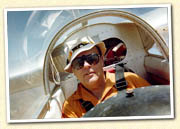 The author of this study guide, Jim Burch, has been a pilot for 60 years, a flight instructor for 33 years, and a pilot examiner for 18 years. The material presented here is based on his experience in learning, teaching, and testing what one needs to know to fly gliders safely and to pass the related FAA tests. Little if any of the material is truly original. It comes from observing and questioning other pilots and instructors and from study of much aviation literature. Some of that literature is also part of the subject matter references used by the FAA in their knowledge tests. Those used in preparing this study aid are included in the adjacent table. You will find some direct quotes from them in the material when their words seem to express an idea particularly well or if the actual words appear in a test question or answer.
Passing the FAA knowledge test and practical test is not the only objective of this study guide. It also is intended to impart knowledge of practical value to the glider pilot. These objectives are not mutually exclusive, but in many cases information not contained in the FAA references will be provided.
The author of this study guide, Jim Burch, has been a pilot for 60 years, a flight instructor for 33 years, and a pilot examiner for 18 years. The material presented here is based on his experience in learning, teaching, and testing what one needs to know to fly gliders safely and to pass the related FAA tests. Little if any of the material is truly original. It comes from observing and questioning other pilots and instructors and from study of much aviation literature. Some of that literature is also part of the subject matter references used by the FAA in their knowledge tests. Those used in preparing this study aid are included in the adjacent table. You will find some direct quotes from them in the material when their words seem to express an idea particularly well or if the actual words appear in a test question or answer.
Passing the FAA knowledge test and practical test is not the only objective of this study guide. It also is intended to impart knowledge of practical value to the glider pilot. These objectives are not mutually exclusive, but in many cases information not contained in the FAA references will be provided.
| REFERENCES
- (1) Federal Aviation Regulations
- (2) AC 00-6 Aviation Weather
- (3) AC 00-45 Aviation Weather Services
- (4) Aeronautical Information Manual
- (5) AC 60-22 Aeronautical Decision Making
- (6) Miscellaneous Advisory Circulars
- (7) Soaring Flight Manual
- (8) AC 61-23 Pilot's Handbook of Aeronautical Knowledge
- (9) FAA-H-8083-3 Airplane Flying Handbook
- (10) American Soaring Handbook
- (11) AC 61-21 Flight Training Handbook
- (12) Joy of Soaring
- (13) Airport/Facility Directory
- (14) Sectional Aeronautical Chart
- (15) Terminal Area Chart
- (16) Fluid-Dynamic Lift, Hoerner and Borst
- (17) Stick and Rudder, Langewiesche
- (18) FAA-H-8083-13 Glider Flying Handbook
|
 The author of this study guide, Jim Burch, has been a pilot for 60 years, a flight instructor for 33 years, and a pilot examiner for 18 years. The material presented here is based on his experience in learning, teaching, and testing what one needs to know to fly gliders safely and to pass the related FAA tests. Little if any of the material is truly original. It comes from observing and questioning other pilots and instructors and from study of much aviation literature. Some of that literature is also part of the subject matter references used by the FAA in their knowledge tests. Those used in preparing this study aid are included in the adjacent table. You will find some direct quotes from them in the material when their words seem to express an idea particularly well or if the actual words appear in a test question or answer.
Passing the FAA knowledge test and practical test is not the only objective of this study guide. It also is intended to impart knowledge of practical value to the glider pilot. These objectives are not mutually exclusive, but in many cases information not contained in the FAA references will be provided.
The author of this study guide, Jim Burch, has been a pilot for 60 years, a flight instructor for 33 years, and a pilot examiner for 18 years. The material presented here is based on his experience in learning, teaching, and testing what one needs to know to fly gliders safely and to pass the related FAA tests. Little if any of the material is truly original. It comes from observing and questioning other pilots and instructors and from study of much aviation literature. Some of that literature is also part of the subject matter references used by the FAA in their knowledge tests. Those used in preparing this study aid are included in the adjacent table. You will find some direct quotes from them in the material when their words seem to express an idea particularly well or if the actual words appear in a test question or answer.
Passing the FAA knowledge test and practical test is not the only objective of this study guide. It also is intended to impart knowledge of practical value to the glider pilot. These objectives are not mutually exclusive, but in many cases information not contained in the FAA references will be provided.